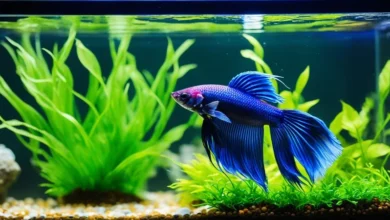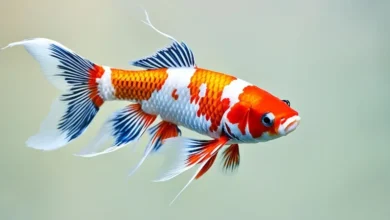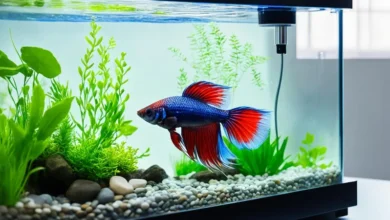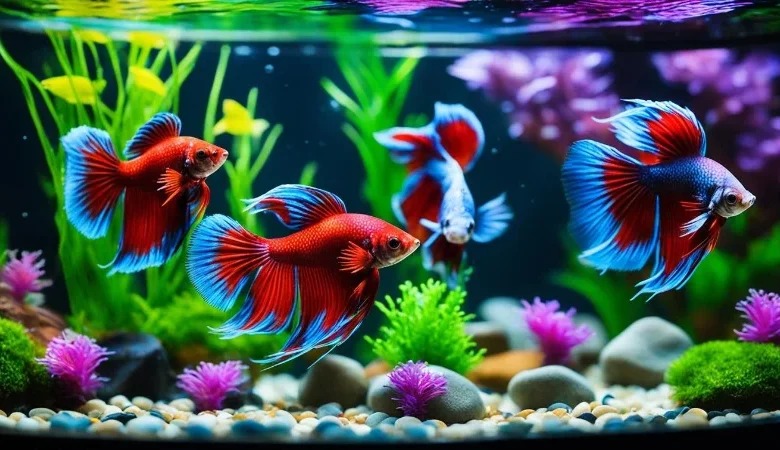
Welcome to our comprehensive guide on mastering betta fish breeding! If you’ve ever been fascinated by the vibrant colors and graceful movements of betta fish, you might have considered trying your hand at breeding them. Breeding betta fish can be a rewarding and fulfilling hobby, but it requires knowledge, dedication, and the proper techniques.
In this guide, we will explore the best practices for betta fish breeding and provide you with expert tips to help you successfully navigate this fascinating world. Whether you’re a beginner or an experienced hobbyist, this betta fish breeding guide will equip you with the knowledge and skills needed to breed healthy and beautiful betta fish. So, let’s dive in and discover the secrets to successfully breeding these captivating aquatic creatures.
Understanding Betta Fish Reproduction
Before delving into the breeding process, it’s important to understand the basics of betta fish reproduction. Betta fish, also known as Siamese fighting fish, have a fascinating breeding cycle that is essential to their survival.
Male bettas play a crucial role in the reproduction process. They have a unique ability to build bubble nests at the water’s surface. These bubble nests serve as a signal to attract females for mating. It’s a remarkable sight to see these small fish carefully construct intricate nests, filled with air bubbles that provide stability and support to their eggs.
Once the female betta is ready to lay her eggs, she carefully releases them, and the male betta swiftly fertilizes them. After fertilization, the male collects the eggs in his bubble nest, ensuring their safety and providing them with an optimal environment for development.
The male betta fish takes on the role of protector and guardian, diligently guarding the bubble nest and the developing embryos within it. He keeps a watchful eye on the eggs, maintaining their temperature, and oxygen supply, and protecting them from potential threats.
This nurturing behavior of male bettas continues even after the eggs hatch. The male betta cares for the fry, ensuring their well-being until they become independent and can fend for themselves. This level of parental care is quite remarkable in the animal kingdom.
This natural betta fish breeding cycle is a beautiful and intricate process that showcases the unique characteristics of these captivating creatures. Understanding the intricate details of betta fish reproduction is essential for any aspiring betta breeder.
Key Points:
- Male bettas build bubble nests to attract females for mating.
- The female lays her eggs, and the male fertilizes them.
- The male collects the eggs in his bubble nest and guards them.
- The male continues to care for the fry until they become independent.
Tips for Mastering Betta Fish Breeding Successful
To have success in breeding betta fish, there are several important tips to consider.
Select Healthy Breeding Stock
Firstly, it is essential to select healthy breeding stock. Choose mature bettas with vibrant colors and fully developed fins. The health and quality of the parent fish will greatly influence the health and quality of the offspring.
Properly Condition Your Bettas
Before breeding, it is crucial to properly condition your bettas. Provide them with a balanced diet that includes high-quality pellets, frozen or live foods, and occasional treats. Ensure their optimal health by keeping their water clean and maintaining appropriate water parameters.
Introduce the Pair Carefully
When introducing the breeding pair, it is important to do so in a controlled manner. Separate the male and female bettas with a transparent divider to allow them to see each other without physical contact. This helps to reduce aggression and allows them to get used to each other’s presence.
Monitor Behavior and Remove the Female if Necessary
Monitor the pair closely during the breeding process. Watch for signs of aggression or stress, as well as any signs that indicate successful breeding, such as the male building a bubble nest. If the female becomes overly aggressive or shows signs of distress, it may be necessary to remove her from the breeding tank to prevent harm.
Maintain Proper Water Conditions
Ensuring proper water conditions is crucial for successful betta fish breeding. Maintain a stable temperature between 78-80°F (25-27°C), with a pH level of around 7.0. It is also important to simulate the change in seasons by gradually lowering the water temperature and performing small water changes to stimulate breeding behavior.
Raise the Fry in a Separate Tank
Once the breeding process is complete and the fry hatch, it is important to separate them from the adult fish. Transfer the fry to a separate tank with gentle filtration and provide them with appropriate food. This ensures their safety and allows for optimal growth and development.
By following these tips and techniques, you can increase your chances of successful betta fish breeding. Remember to select healthy breeding stock, properly condition your bettas, monitor their behavior, maintain proper water conditions, and raise the fry in a separate tank.
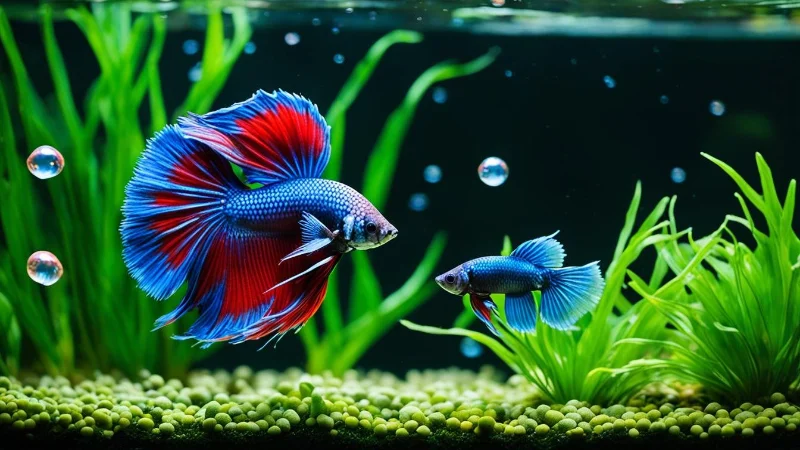
Choosing the Best Substrate for Betta Fish
When setting up a betta fish tank, choosing the right substrate is crucial for the well-being of your fish. The substrate serves both practical and aesthetic purposes, providing a foundation for your tank and enhancing its visual appeal.
There are several options to consider when selecting the best substrate for your betta fish. Fine gravel is a popular choice as it offers a natural appearance and is easy to clean. This substrate allows debris to settle between the granules, keeping the tank looking clean and tidy. Additionally, gravel provides a stable surface for live plants and helps maintain their root systems.
Sand is another substrate option that creates a soft and natural-looking environment for your bettas. Many hobbyists prefer sand because it mimics the betta’s natural habitat. It offers a smooth surface for the fish to rest on and creates a beautiful contrast against colorful betta fish. However, it’s important to note that sand can be more challenging to clean compared to gravel.
Some betta fish breeders prefer a bare-bottom tank for breeding purposes. A bare-bottom tank simplifies cleaning and reduces the risk of debris accumulating, making it easier to maintain a clean and hygienic environment for the breeding pair and their fry. However, it’s crucial to provide hiding spots and suitable surfaces for the bubble nest construction, which can be achieved by adding spawning mops or live plants.
Live plants can be a beneficial addition to your betta fish tank. They provide hiding spots for the bettas and their fry, reducing stress and creating a more natural environment. Additionally, live plants help enhance water quality by absorbing excess nutrients and providing oxygen for the fish. However, it’s important to choose betta-safe plants that are compatible with the water parameters and lighting conditions in your tank.
Essential Equipment and Supplies for Betta Fish Breeding
To successfully breed betta fish, it is important to have the right equipment and supplies. Creating an optimal breeding environment for your bettas can significantly increase your chances of successful breeding. Here are the essential items you’ll need:
Breeding Tank
A dedicated breeding tank is essential for betta fish breeding. It should be spacious enough to accommodate the pair comfortably and provide ample hiding spots. A tank size of at least 10 gallons is recommended for breeding purposes.
Heater
Since bettas are tropical fish, maintaining a stable water temperature is crucial for their breeding success. Use a reliable aquarium heater to keep the water temperature around 78-80°F (25-27°C) throughout the breeding process.
Thermometer
A thermometer is necessary to monitor the water temperature accurately and ensure that it remains within the ideal range for breeding.
Filter
A gentle filter is recommended to maintain water circulation and provide a clean and healthy environment for the bettas. Be cautious of strong filters that may harm the delicate fry.
Lighting
Proper lighting conditions in the breeding tank can help stimulate the bettas’ natural behavior and encourage breeding activity. Use a light source that mimics natural daylight and provides a photoperiod of 12-14 hours per day.
Additional Supplies
Consider adding spawning mops or live plants, such as java moss or banana plants, in the breeding tank. These items provide the bettas with suitable surfaces for bubble nest construction and offer hiding spots for the female betta when necessary.
Ensure the water conditions in the breeding tank are optimal by using water conditioners and testing kits. These tools help maintain water quality by neutralizing harmful substances and monitoring parameters like ammonia, nitrite, and pH levels.
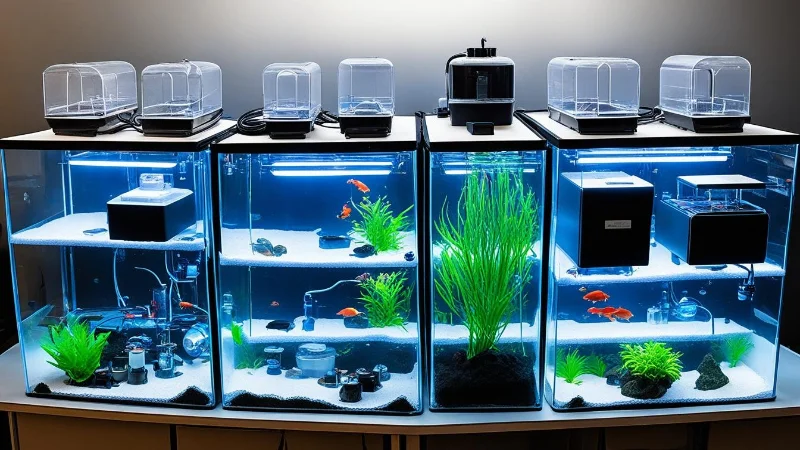
Caring for Betta Fry
Once the betta fry hatch, they initially feed on their yolk sacs. As they become free-swimming, it is important to provide them with appropriate food such as infusoria, baby brine shrimp, or commercially available fry food. Maintaining pristine water conditions and separating the fry into a separate tank as they grow is crucial for their well-being. Proper care and attention during this stage will contribute to the successful development of the betta fry.
Caring for betta fry requires special consideration. As soon as they hatch, the fry rely on their yolk sacs for sustenance. However, once they start swimming freely, it is essential to introduce them to suitable nourishment. Infusoria, consisting of microscopic organisms, serves as an excellent first food choice for betta fry, as it provides the essential nutrients they need for growth and development.
Another option is baby brine shrimp, commonly available at pet stores or can be hatched at home. These tiny aquatic creatures are rich in proteins and can be an excellent source of nutrition. Commercially available fry food specifically designed for betta fry is also a convenient option, ensuring that the fry receives a balanced and appropriate diet.
In addition to providing the right food, maintaining pristine water conditions is vital for the health of betta fry. Regular water changes and careful monitoring of temperature and water quality parameters – such as pH and ammonia levels – are crucial. Filters and gentle aeration can help ensure optimal water conditions for the growing fry.
As the fry continues to grow, it is important to separate them into a separate tank to prevent overcrowding and minimize the risk of aggression and cannibalism. A tank specifically designed for raising betta fry, with appropriate filtration and temperature control, will create the ideal environment for their development. Monitoring their growth and health closely will allow you to identify any potential issues and take necessary measures promptly.
By providing proper care and attention to betta fry during their early stages of life, you are setting them up for successful development and ensuring their overall well-being. Remember to monitor their food intake, water conditions, and growth progress regularly. With dedication and the right care, you will be rewarded with healthy and vibrant betta fry that will grow into beautiful adult fish.
Troubleshooting Common Breeding Challenges
Breeding betta fish can be an exciting endeavor, but it doesn’t come without its fair share of challenges. Understanding and addressing these common breeding problems is essential to increase the chances of successful betta fish breeding.
Aggression between Male and Female
One of the most common challenges in betta fish breeding is aggression between the male and female bettas. In some cases, the male might become too aggressive towards the female, causing her stress or potential harm. To mitigate this issue, it’s crucial to carefully monitor the pair’s behavior throughout the breeding process. If signs of extreme aggression persist, separating the bettas is necessary to prevent injuries.
Inadequate Bubble Nest Construction
Bubble nest construction is a natural behavior of male bettas and an essential part of the breeding process. However, some males may struggle to build adequate bubble nests, which can affect the success of breeding. To encourage proper nest-building, provide the male with appropriate materials such as floating vegetation or other objects that can support the nest. Additionally, maintaining optimal water conditions, such as warm water and proper oxygenation, can greatly influence nest construction.
Problems with the Eggs or Fry
Issues can arise with the eggs or fry during the breeding process. Common problems include fungal infections, failed hatching, or fry mortality. It’s crucial to carefully monitor the development of the eggs and fry, ensuring they are free from any signs of infection or abnormalities. Providing a clean and well-maintained breeding environment, along with high-quality nutrition, can help prevent these issues.
Cannibalism among the Fry
Cannibalism is a significant concern when breeding betta fish, especially as the fry begins to grow. In some cases, the male betta might consume the fry, leading to a decrease in survival rates. To minimize cannibalism, it’s important to separate the fry from the male once they become free-swimming. This can be done by transferring the fry to a separate rearing tank equipped with suitable hiding spots and appropriate nutrition.
Addressing these common breeding challenges is crucial to ensure the success and survival of betta fish fry.
By understanding and proactively addressing these common breeding challenges, you can increase the likelihood of successful betta fish breeding. Remember to carefully monitor the behavior of the male and female, provide suitable conditions for bubble nest construction, and take necessary steps to prevent cannibalism among the fry. With patience and persistence, you can overcome these challenges and enjoy the beauty of a thriving betta fish colony.
Conclusion
Breeding betta fish can be a rewarding experience for any fish enthusiast. Through the implementation of the expert tips and comprehensive guidelines provided in this article, you can significantly increase your chances of successful betta fish breeding. It is crucial to create a suitable breeding environment by carefully selecting healthy breeding stock, conditioning your bettas, and monitoring their behavior throughout the process.
As you embark on your journey to master the art of breeding betta fish, remember to maintain optimal water conditions, stimulate breeding behavior, and separate the female if necessary. By doing so, you are creating the ideal conditions for your bettas to spawn and for the male to care for the fry once they hatch. Proper care, attention, and dedication during the early stages of betta fry development are essential for their successful growth.
With patience and perseverance, you can witness the rewarding sight of betta fry growing into beautiful and vibrant individuals. Providing them with a well-suited habitat, equipped with suitable equipment and supplies, will ensure their wellbeing in their new environment. By following these guidelines, you are well on your way to becoming a skilled breeder of betta fish and enjoying the beauty and joy that comes from successfully breeding these captivating creatures.
